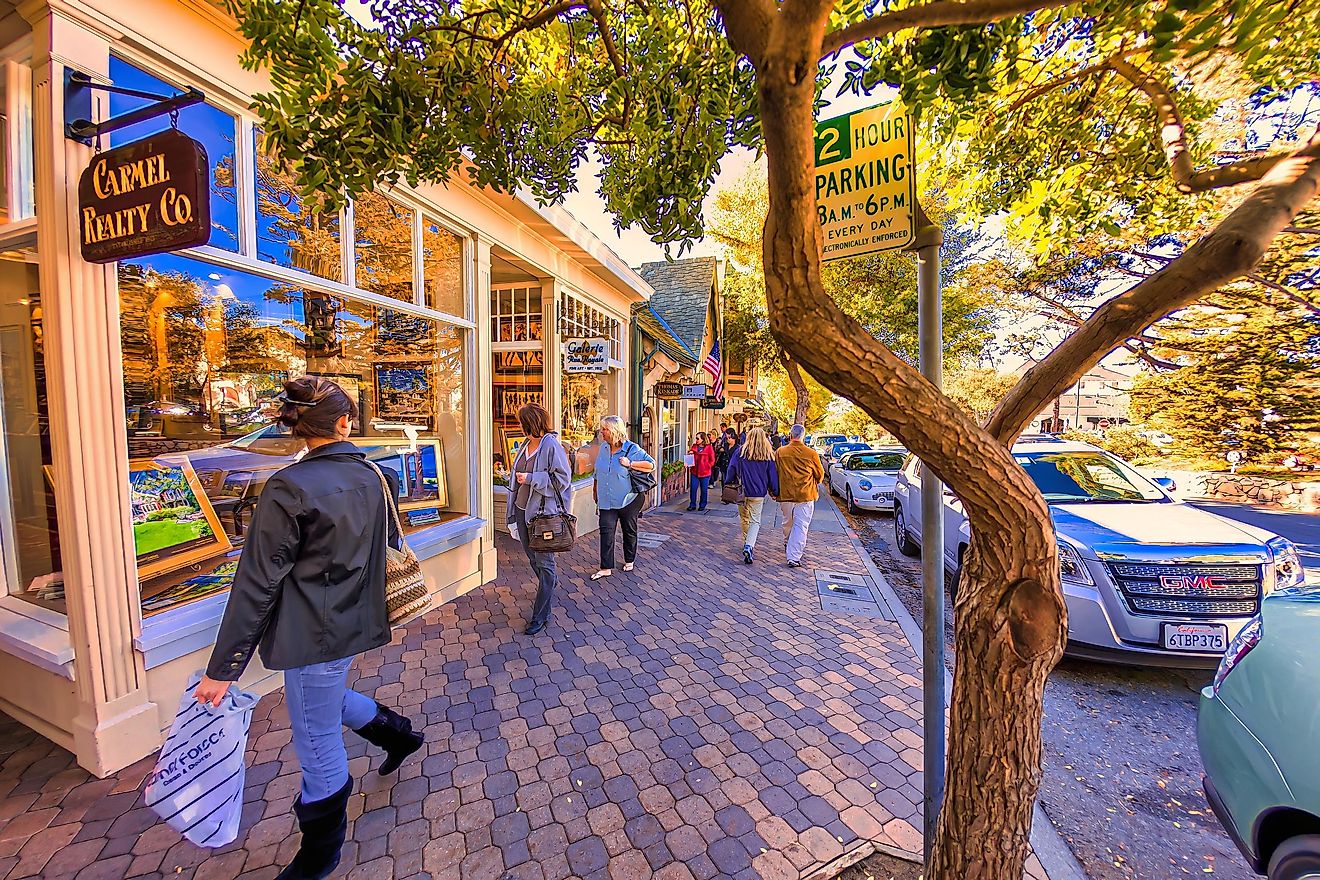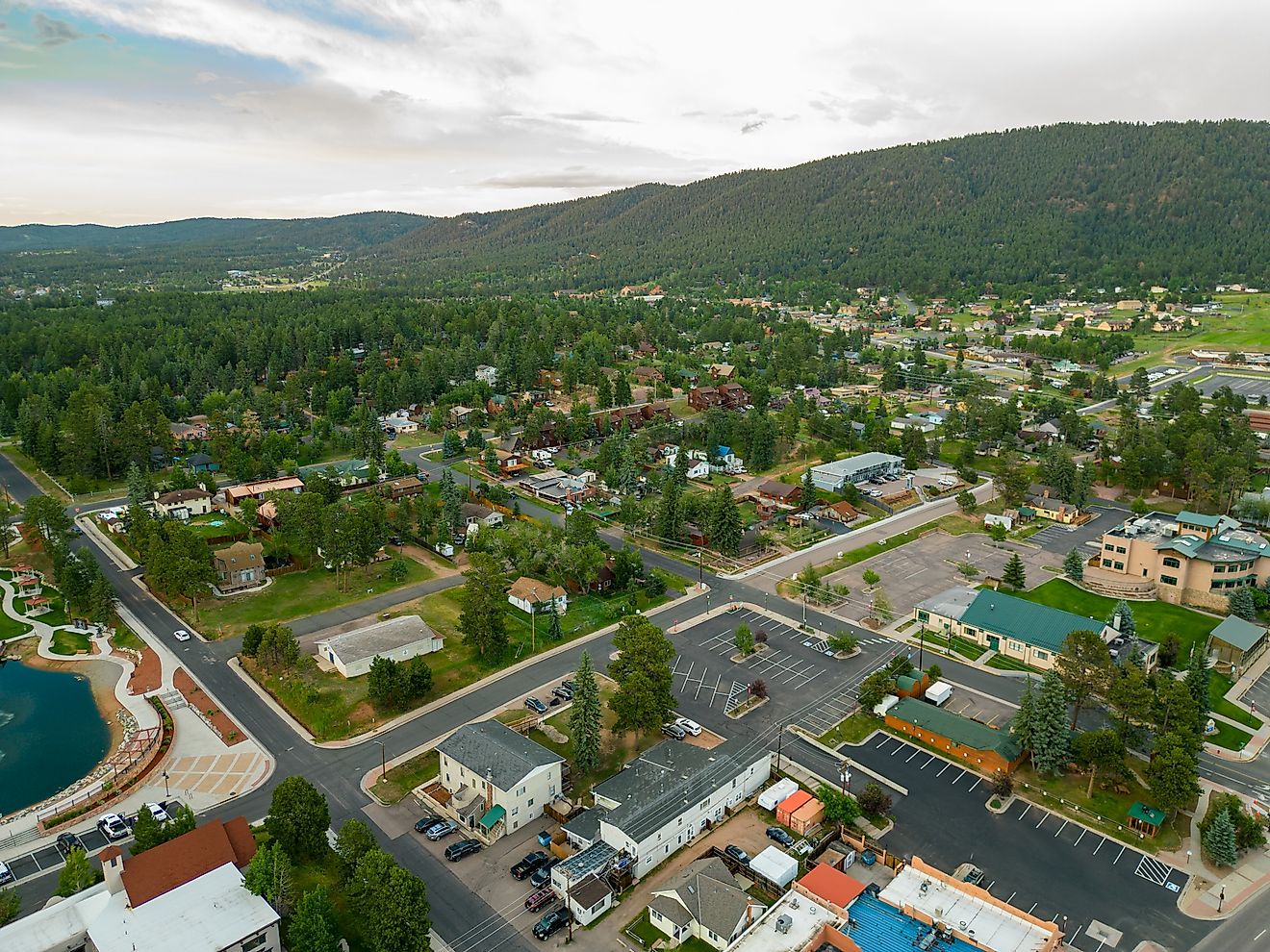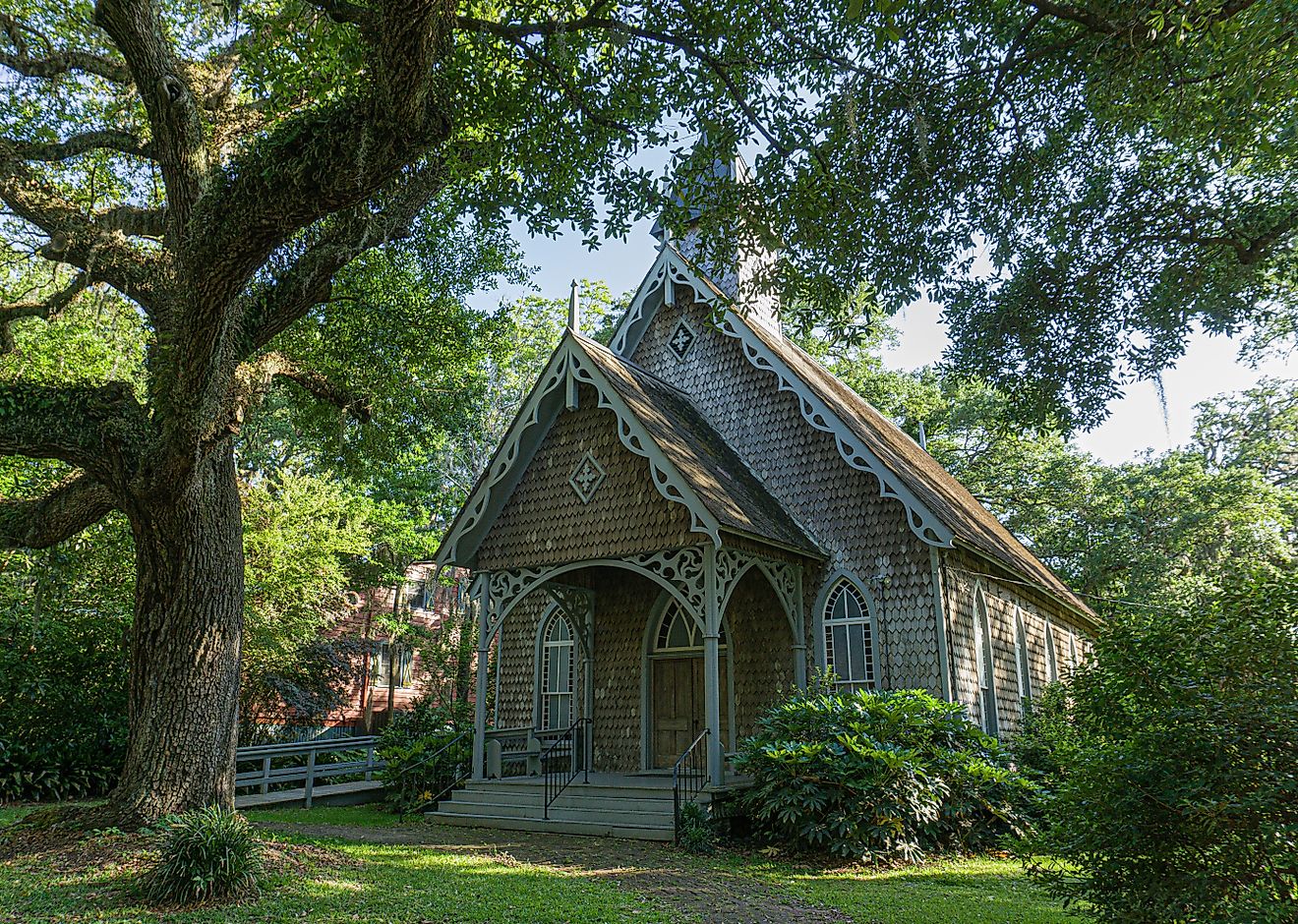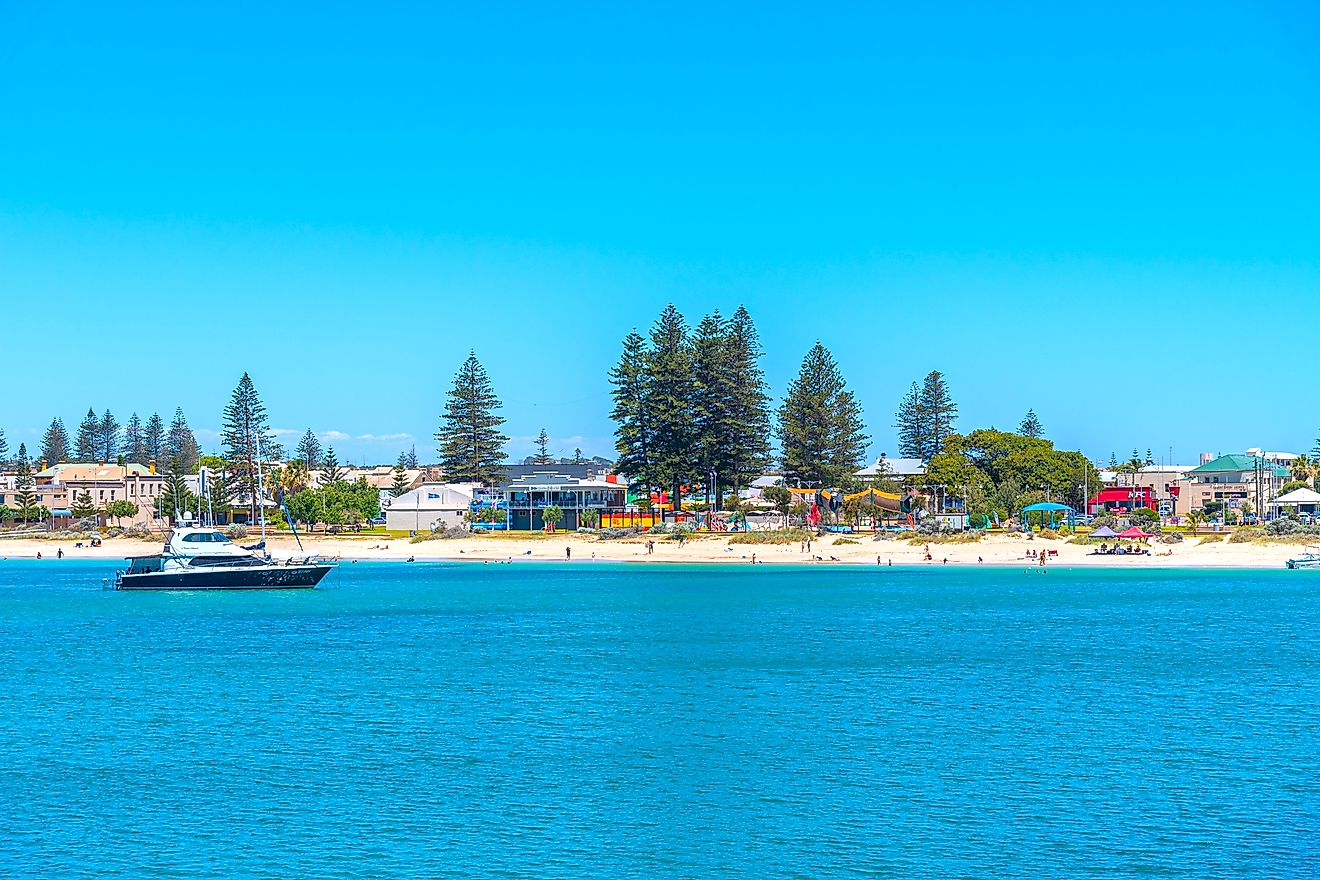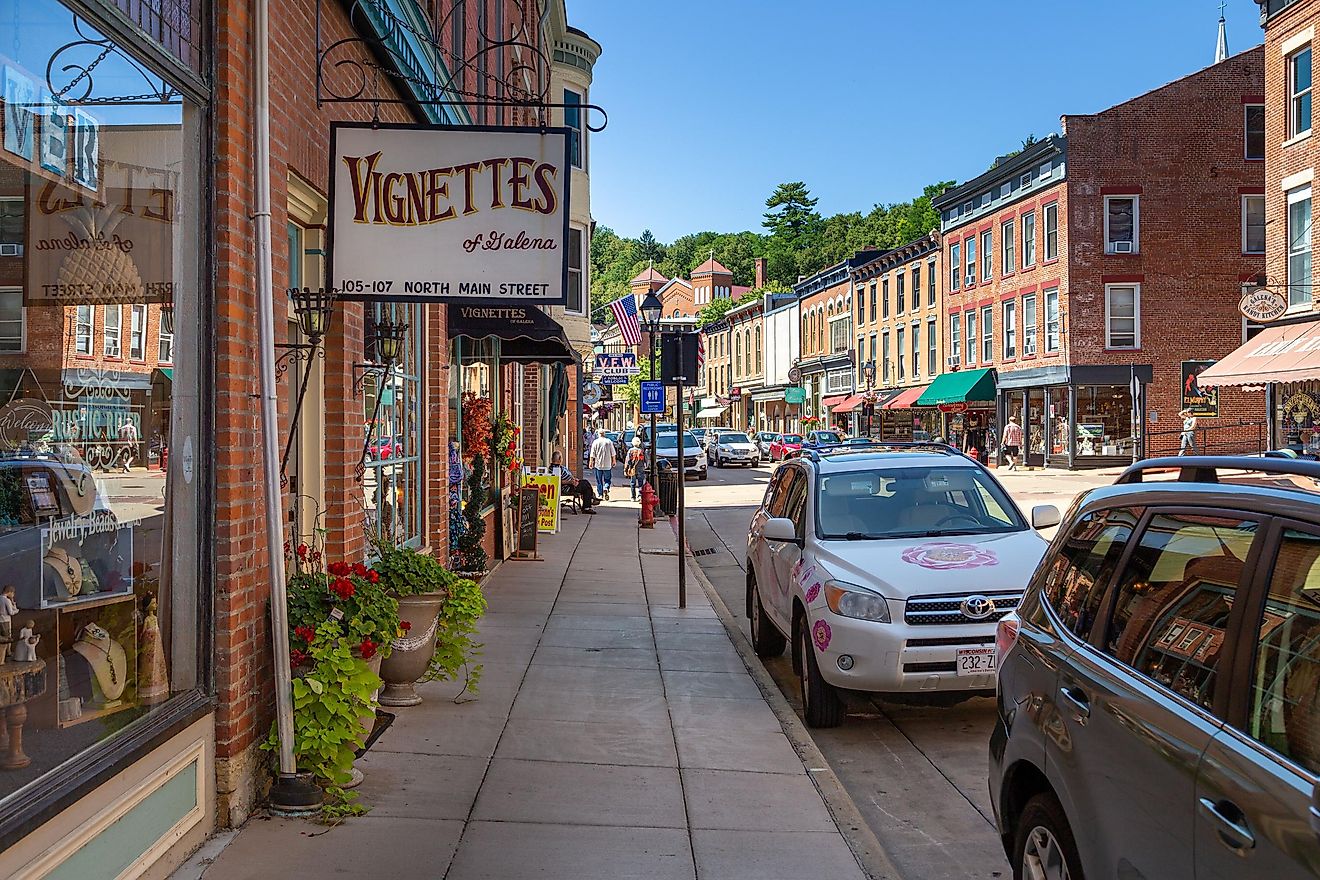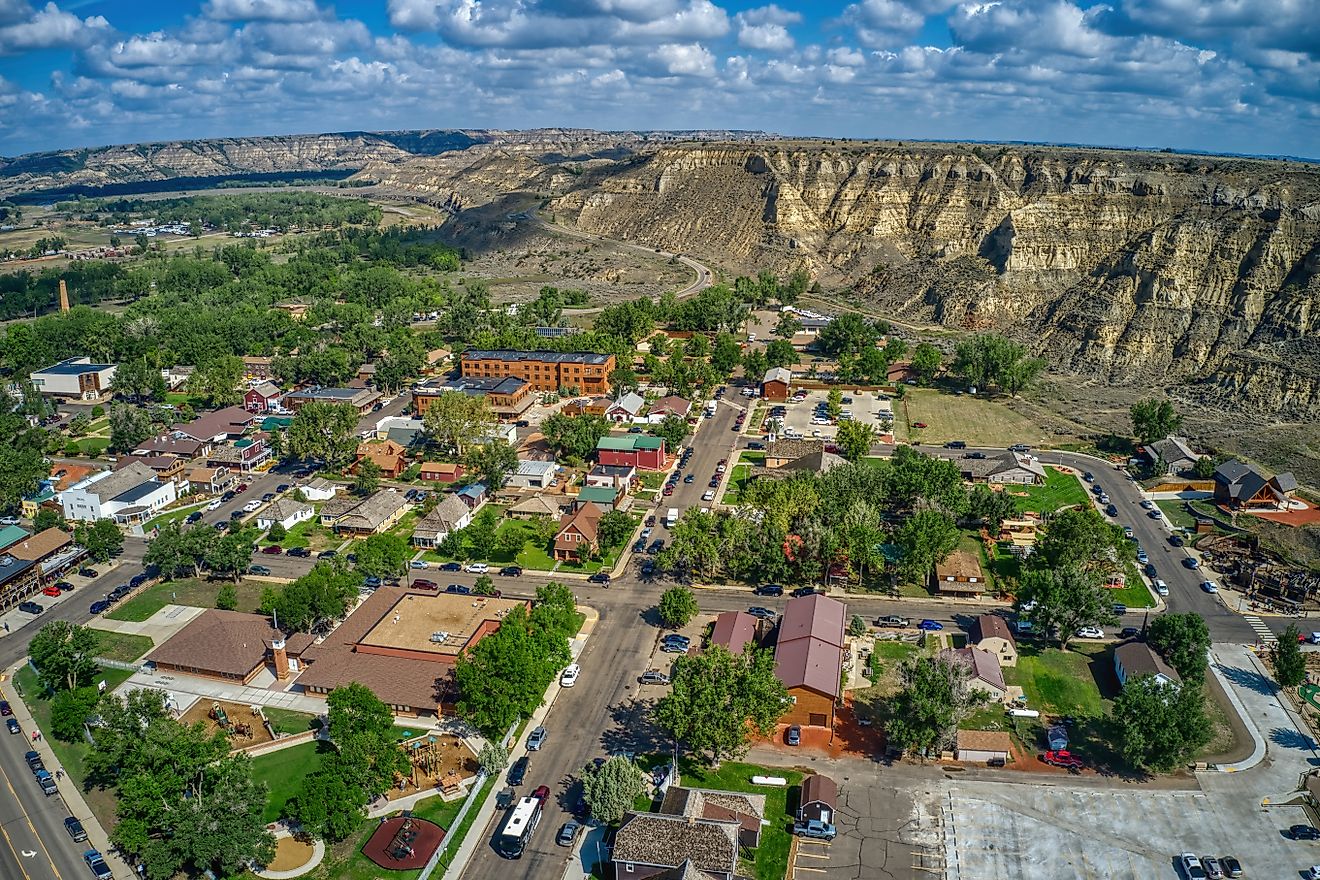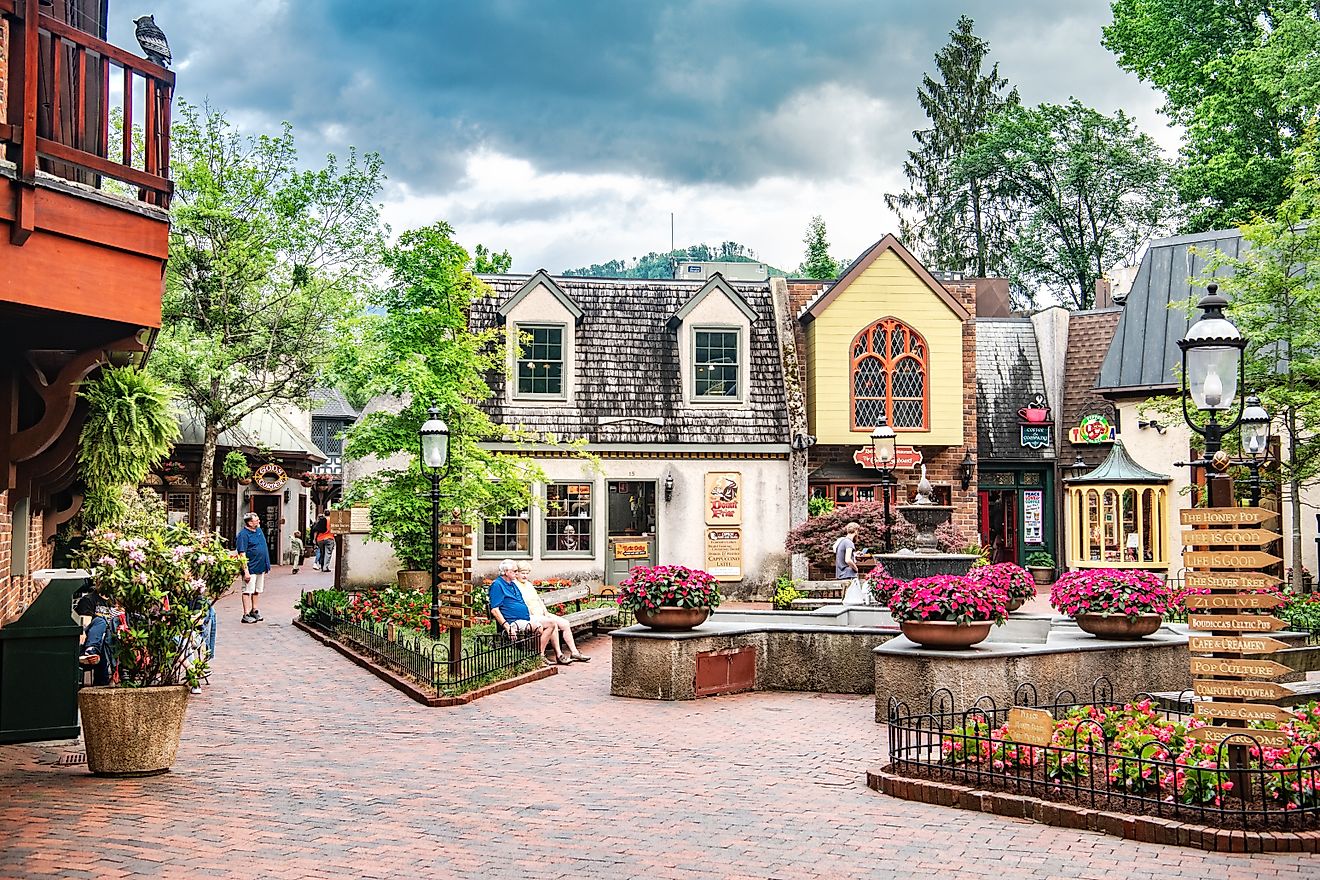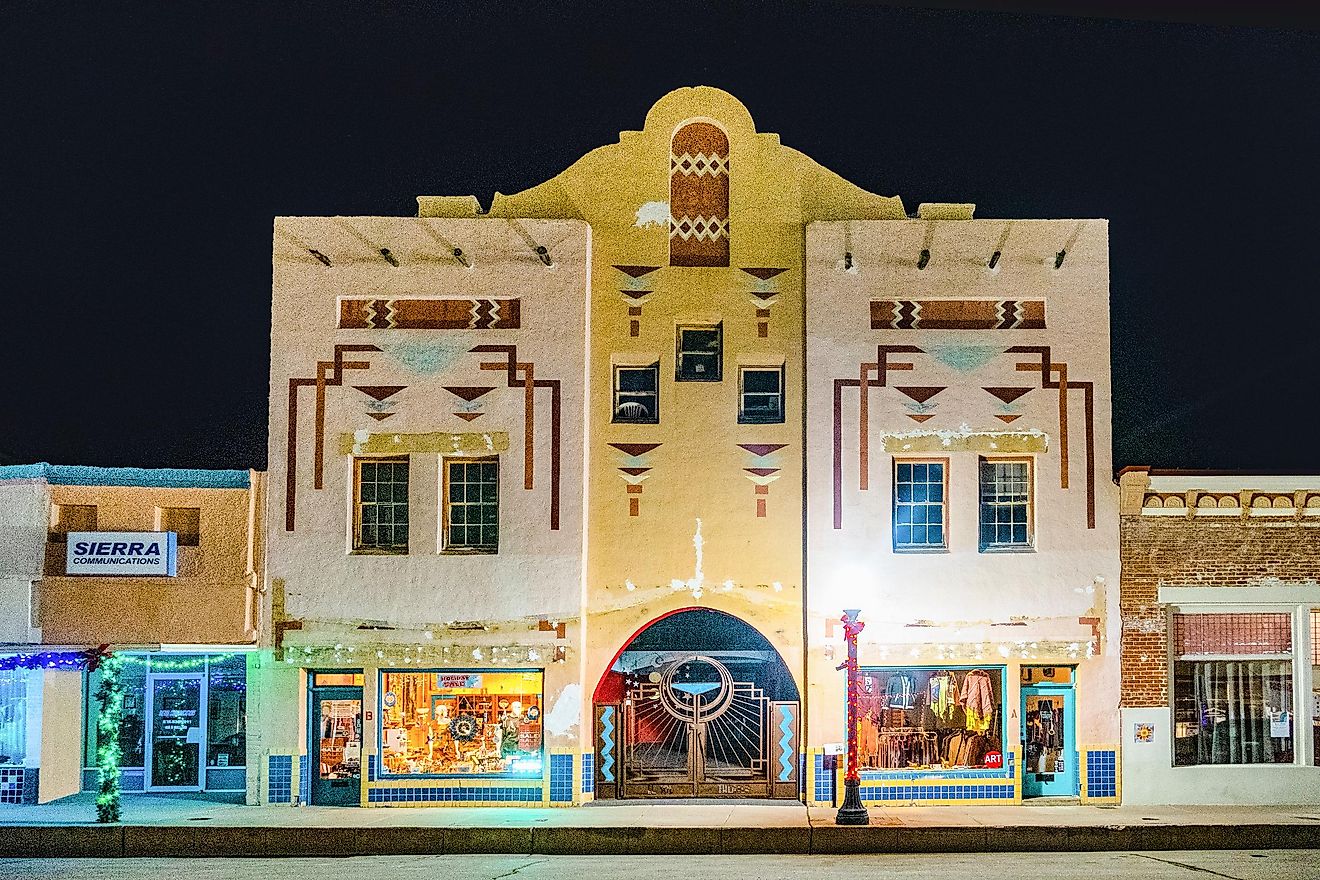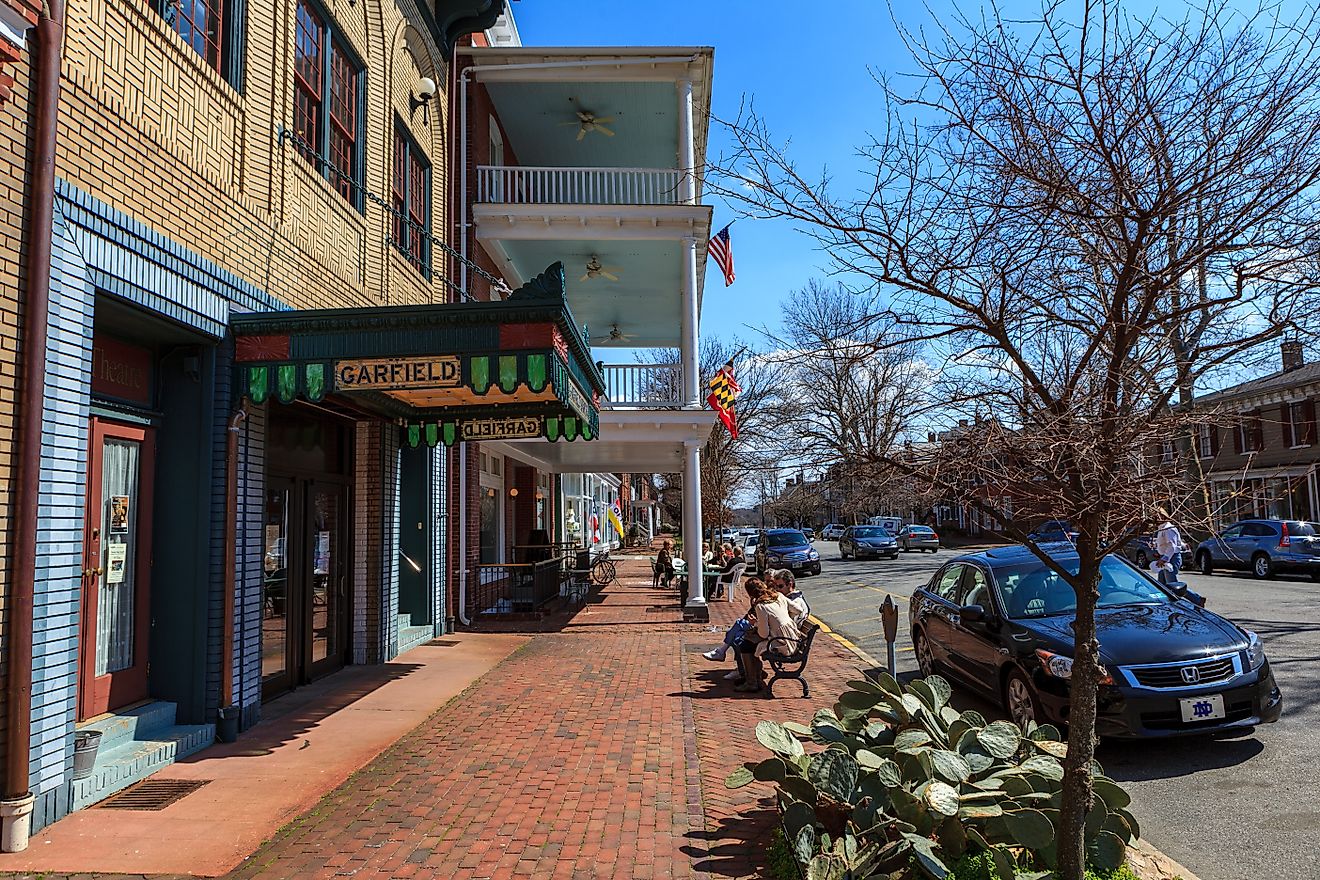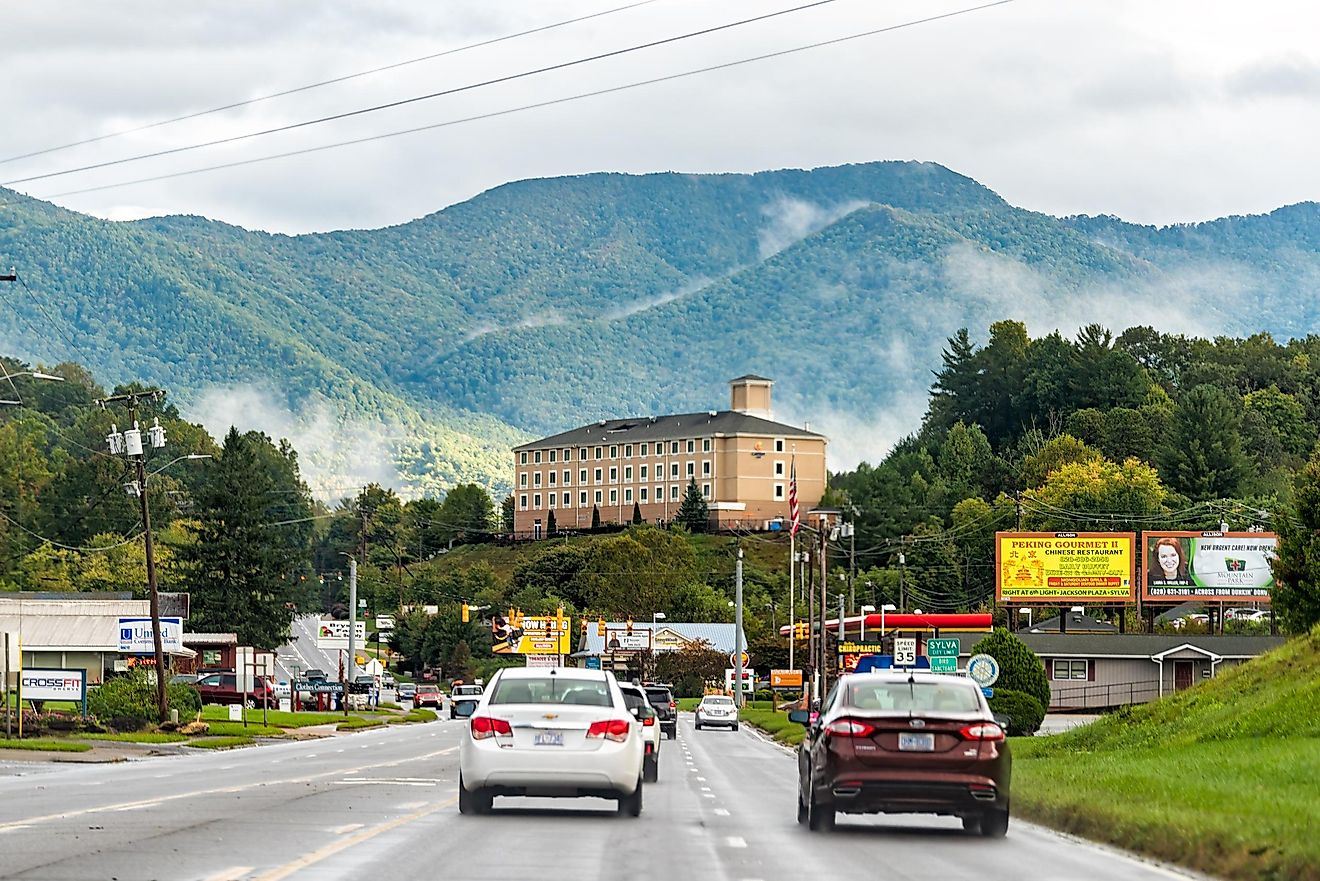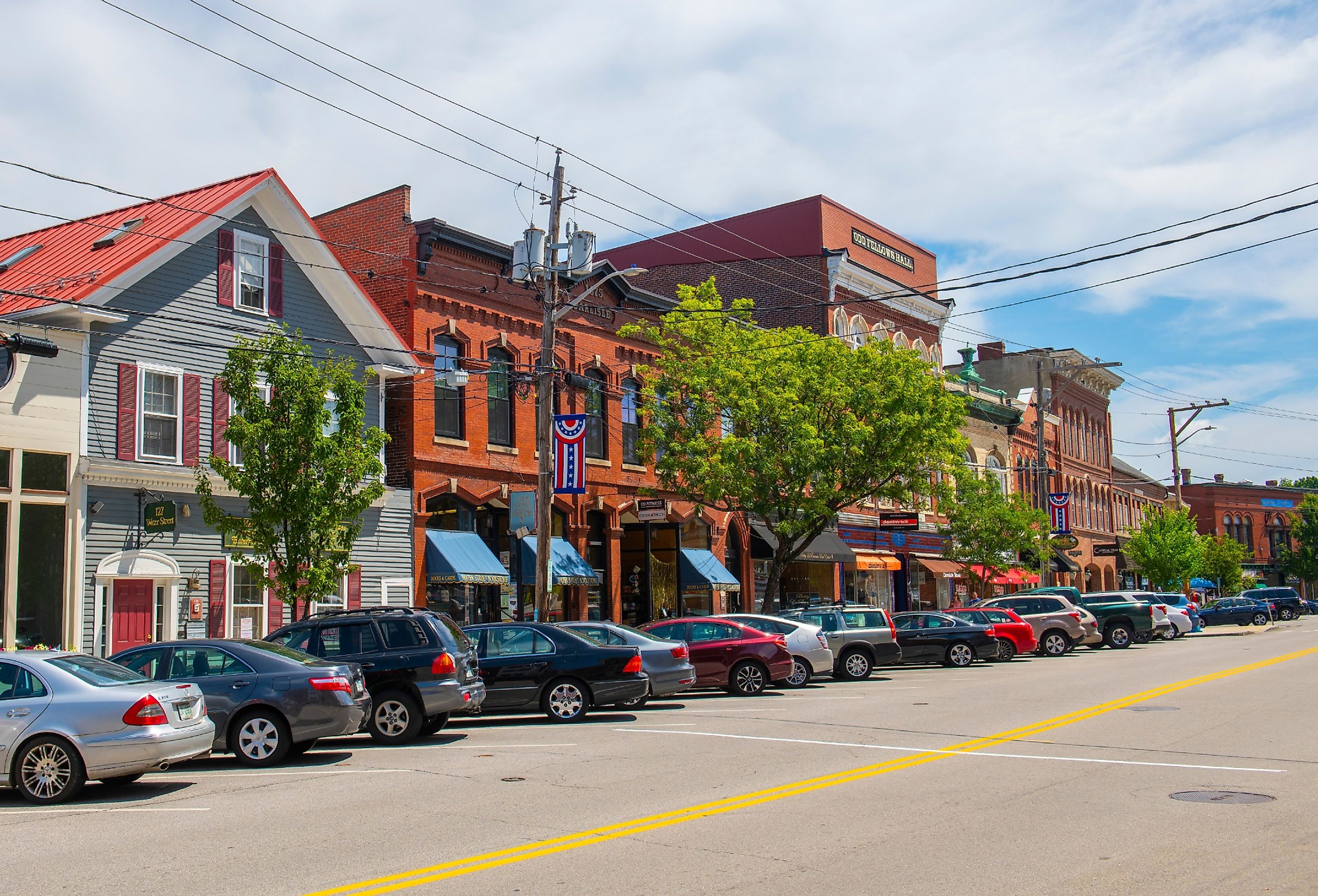
8 Small Towns in New Hampshire With Big Charm
In 2022, the state of New Hampshire announced it had shattered several of its tourism records. Measuring against the previous record-breaking year (2019), it experienced a 38% uptick in visitors, amounting to a robust 4.3 million people traveling to The Granite State. Additionally, the amount of money spent by tourists increased by 65% from its 2019 high, topping out at nearly $2 billion. One of the major reasons why the state is currently enjoying such a surge in tourist interest is because of the undeniable charm of its small towns. From the historic city of Portsmouth to the farming community of Cornish, uncover eight communities that exemplify the enchanting allure of New Hampshire.
Portsmouth

The city of Portsmouth, New Hampshire, conveys an aura of old-world magic. Incorporated in 1653, the town was named to honor founder John Mason, who once held the position of captain in the English port city of Portsmouth (which is in the county of Hampshire in the United Kingdom, otherwise known as New Hampshire's namesake).
Visitors can take a journey through Portsmouth's centuries-long history by touring any number of local museums and cultural centers. There is Warner House, which is the oldest surviving brick house in northern New England and contains ornate colonial-era Anglo-American murals. Also of note is Governor John Langdon House, which served as the functional estate of the titular three-term governor of New Hampshire, revolutionary leader, and US Constitution signatory. The Black Heritage Trail of New Hampshire is based out of Portsmouth as well and specializes in walking tours featuring local sites of African-American cultural significance.
For those in the mood for a maritime adventure, Portsmouth Harbor Cruises and Isles of Shoals Steamship Company each provide motorized ship rides showcasing the town's beautiful coastline. If traveling by sail is the goal, the Gundalow Company of Portsmouth offers trips down the Piscataqua River in a traditional reproduction of a flat-bottom gundalow barge.
Hanover

Most people probably associate the town of Hanover, New Hampshire, as the location of Dartmouth College. But the town of 11,870, which sits along the banks of the Connecticut River in the eastern portion of the state, has so much more to discover than a taste of Ivy League life.
Outdoorsy and sporty types will enjoy hitting the slopes at the much-vaunted Saskadena Six Ski Area, experiencing an up-close look at native wildlife at Vins Nature Center, playing a challenging 18 holes at the spectacular Montcalm Golf Club, or simply taking a brisk hike along the New Hampshire segment of the legendary Appalachian Trail.
For scientifically- and artistically-minded visitors, the Montshire Museum of Science and Hood Museum of Art each provide a welcome dose of education and enlightenment. For the black-tie crowd, Hopkins Center for the Arts maintains a full calendar of theatrical productions, orchestral concerts, and world-class entertainment acts of all types.
Sugar Hill

Sugar Hill, New Hampshire, is a community of only 647 souls, much better characterized as a village rather than a town. However, Sugar Hill punches far above its weight when it comes to attracting tourists, and a large part of the reason for that is its surrounding geography.
The village overlooks White Mountain National Forest, a federally administered nature preserve dominated by several breathtaking mountain ranges. The Presidential, Franconia, Dalton, and Kinsman ranges can be seen while standing in the center of Sugar Hill proper, but anyone who can handle heights well will definitely want to get a little closer via the Cannon Mountain Aerial Tramway. The tramway provides an unforgettable eight-minute ride to the 4,080-foot summit of Cannon Mountain, whereupon riders are treated to a panoramic view of the countryside. On a clear day, mountains in Maine, Vermont, and New York are visible from the summit.
Visitors would also be wise to devote an afternoon to walking through Sugar Hill Historical Museum to view relics and documents from the village's past as a frontier outpost in the 1700s and early 1800s. Some regionally famous businesses call Sugar Hill home, too, including Harmon's Cheese and Country Store, Polly's Pancake Parlor, and the Sunset Hill House, a top-rated hotel with a restaurant, tavern, and nine-hole golf course on site.
Bartlett

Another community on the outskirts of White Mountain National Forest is Bartlett, New Hampshire. The town is home to 3,200 permanent residents, and includes the nearby unincorporated territory of Glen within its greater municipality. Named after the state's first governor, Dr. Josiah Bartlett (fun fact: Martin Sheen's fictional President of the United States character in The West Wing was also named after this historical figure), the town plays host to two of New Hampshire's premiere vacation hot spots: Attitash Mountain Resort and Story Land.
Attitash Mountain Resort is one of the largest ski lodges in the state, boasting 68 ski runs across two connected mountains. It is deliberately set up to draw in skiers of all ages and skill levels, even maintaining a ski school on premises for beginners. The Grand Summit Hotel at Attitash is an imposing structure, replete with upscale rooms and suites for patrons of the resort. Equipped with a heated outdoor swimming pool, saunas, a restaurant, a bar, and a special children's game room, the hotel often leaves guests wondering which was the more memorable part of visiting Attitash—the skiing or the accommodations?
Story Land is a children's theme park with fairy tales and nursery rhymes as its central focus. In that spirit, it features play areas with actors personifying Little Miss Muffet, Humpty Dumpty, and Mother Goose, among many others, as well as rides such as Alice's Tea Cups and Cinderella's Pumpkin Coach. The theme park also has petting zoos, a water park, and a miniature railroad that serves as a shuttle service. A beloved New Hampshire institution, Story Land has been in business since 1954.
Bartlett Covered Bridge is another popular spot with out-of-towners. Constructed in 1851, it is what is known within historical bridge enthusiast circles as a Paddleford truss with added arches. It can be found about four and half miles east of Bartlett over the Saco River.
Franconia

Anyone interested in becoming acquainted with some of New Hampshire's celebrated natural features ought to consider a trip to Franconia. The town is home to Franconia Notch, one of the northeast's true physical wonders. Franconia Notch is a mountain pass winding through the White Mountains and extending from Flume Gorge in the south to Echo Lake in the north—all of which is within the public recreation area and nature preserve that is Franconia Notch State Park. Also featuring multiple waterfalls and covered bridges, the park is a popular destination for those who enjoy hiking, camping, or simply taking an afternoon to appreciate the beautiful landscape.
Franconia also happens to contain a farmhouse owned by the late poet Robert Frost, winner of multiple Pulitzer Prizes and one-time Poet Laureate of the United States. Frost and his family lived in the house full-time from 1915 to1920, later using it as a summer residence for the better part of two decades. In 1976, the town of Franconia purchased the property and transformed it into The Frost Place; a poetry center and museum dedicated to the late poet's legacy. As such, a healthy number of literary buffs and poetry fans descend on Franconia each year to pay tribute to the legendary wordsmith.
Exeter

Exeter, New Hampshire, is a town steeped in colonial history. It is one of the many municipalities in New Hampshire descended from Puritan settlers. In 1638, a clergyman banished from the Massachusetts Bay Colony bought the land on which the town now sits from a Native American chief. He took approximately 175 people with him to form the earliest incarnation of the town, naming it after the eponymous city in England. In the ensuing decades and centuries, Exeter had roles to play in the American Revolution, the War of 1812, and even the ramp-up to the Civil War in the 1850s and 1860s, as its Squamscott Hotel served as a meeting place for prominent abolitionists and charter members of the newly-created Republican Party.
These days, Exeter is a town of 16,049 people, and hosts a few fascinating historical sites for outsiders to browse. The American Independence Museum is housed in the historic Ladd-Gilman House (also known as Cincinnati Memorial Hall). Built in 1721, the mansion is one the first brick houses ever built in The Granite State, and is now used to showcase exhibits chronicling the early days of America's struggle for self-governance. The Powder House in Exeter was constructed in 1771 and later used to store gunpowder, lead, and flint in the USA's war effort and against Great Britain and its colonies during the War of 1812. The building was totally refurbished in 1999, and tourists can visit to gain insight into a conflict that helped shape the history of North America.
The preparatory private school Philips Exeter Academy is also based in the town and garners a fair number of curious sight-seers. Of particular note is the school's library, which is the largest secondary school library in the world. Completed in 1972 by acclaimed designer Louis Kahn, the building is regarded as a quintessential example of the International Modernism style. In 1997, the library was recognized by the American Institute of Architects as a work of enduring significance.
Meredith
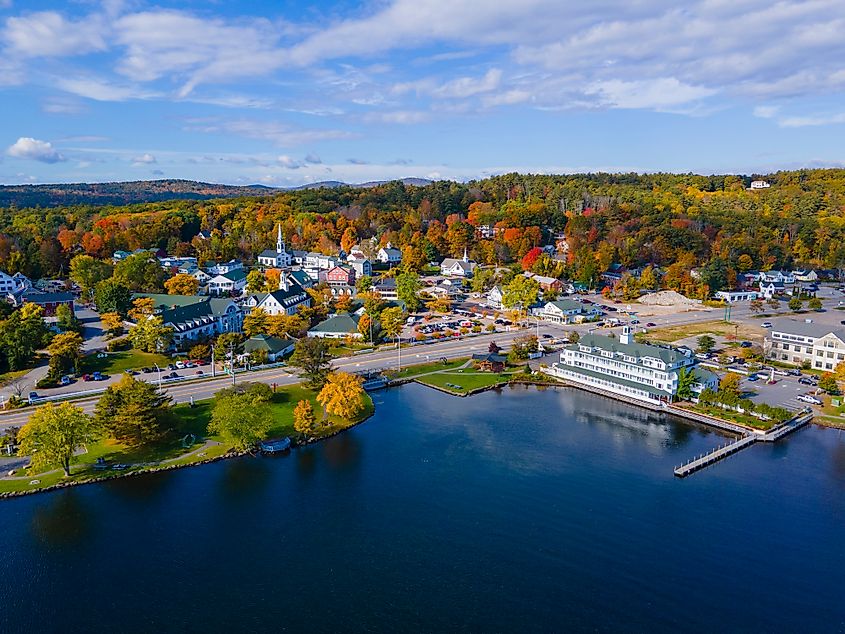
For those who prefer a leisurely waterside getaway, the town of Meredith, New Hampshire, is a fantastic destination. Meredith is a resort community of 6,662 people found in the east-central part of the state, smack dab in the middle of what New Hampshirites call the Lakes Region. The commercial section of the town lies along the shores of Lake Winnipesaukee, and a handful of other lakes lie partially or totally within the town boundaries, including Lake Waukewan and Lake Winnisquam. As such, water-based activities are a big part of Meredith's draw, and businesses that rent or charter pontoon boats, paddleboards, aqua cycles, kayaks, and canoes are exceptionally popular with tourists.
Hermit Woods Winery is a local Meredith establishment that provides a wide variety of epicurean experiences, including guided tours of the facility, wine tastings, and gourmet meals from its onsite restaurant. If a change of scenery is in order, taking a ride on the Winnipesaukee Scenic Railroad is a great option. The two-hour round-trip excursion begins at Meredith station, proceeding around the western portion of New Hampshire's largest lake and showcasing the surrounding countryside by following a segment of rail that was once part of the old Boston, Concord, and Montreal line.
Cornish

Cornish, New Hampshire, is a farming community of 1,616 residents, just across the state's western border with Vermont. Its pastoral setting is ideal for anyone seeking to spend time in quiet repose, and the town has been used accordingly as a retreat for artists since the 19th century. This trend was started by noted sculptor Augustus Saint-Gaudens in 1885, who enjoyed his time in the town so much that he began to take like-minded creative types with him on his annual summer pilgrimages. After a few years, the result of this trend was the creation of the Cornish Art Colony, which flourished through to the end of World War I. However, even after that, Cornish still attracted cultural heavyweights, as evidenced by the notoriously reclusive writer J.D. Salinger taking up residence in the town from the 1950s until his death in 2010.
Saint-Gaudens National Historic Site commemorates the legacy of the Cornish Art Colony by preserving the studio and seasonal hideaway of its central figure. A wealth of sculptures adorns its gardens, and an art gallery and visitor's center now dwell inside the house itself.
Beyond its long-term relationship with the fine arts, Cornish also possesses many historical sites of interest to travelers. The town maintains four historic covered bridges: Blow-Me-Down Covered Bridge, Dingleton Hill Covered Bridge, Kenyon Bridge, and most well-known of all, Cornish-Windsor Covered Bridge, which spans the entire width of the Connecticut River and held the title as the longest covered bridge still standing in the United States until 2008.
Trinity Church is another long-time Cornish staple. Constructed between 1803 and 1808, the church has hosted a number of denominations over the centuries, including Episcopalian and Anglican congregations. Its simplistic design, small dimensions, and modest cemetery serve to illustrate the humble nature of spiritual life on the northeastern American frontier, and it has been listed on the National Register of Historic Places since 1980.
Coined in reminiscence of its role in the American Revolution, New Hampshire's official motto is "Live Free or Die," but another equally valid slogan could be "Charm Capital of the United States." With its snow-capped mountain ranges, rugged forests, and a plethora of preserved colonial buildings, the state is a top-tier destination for tourists across North America. Its small towns, in particular, encapsulate an endearing appeal impossible to find elsewhere. As anyone who has spent time recreating in the resort villages, old frontier communities, college towns, oceanside burgs, and inland whistle stops of New Hampshire can attest, vacationing in The Granite State is nothing if not a charming experience.
